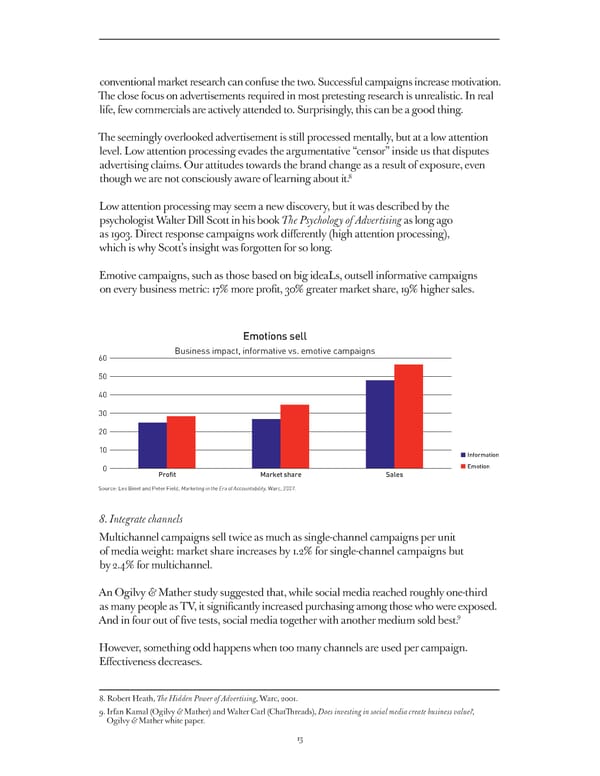conventional market research can confuse the two. Successful campaigns increase motivation. The close focus on advertisements required in most pretesting research is unrealistic. In real life, few commercials are actively attended to. Surprisingly, this can be a good thing. The seemingly overlooked advertisement is still processed mentally, but at a low attention level. Low attention processing evades the argumentative “censor” inside us that disputes advertising claims. Our attitudes towards the brand change as a result of exposure, even 8 though we are not consciously aware of learning about it. Low attention processing may seem a new discovery, but it was described by the psychologist Walter Dill Scott in his book The Psychology of Advertising as long ago as 1903. Direct response campaigns work differently (high attention processing), which is why Scott’s insight was forgotten for so long. Emotive campaigns, such as those based on big ideaLs, outsell informative campaigns on every business metric: 17% more profit, 30% greater market share, 19% higher sales. Emotions sell 60 Business impact, informative vs. emotive campaigns 50 40 30 20 10 Information 0 Emotion Profit Market share Sales Source: Les Binet and Peter Field, Marketing in the Era of Accountability, Warc, 2007. 8. Integrate channels Multichannel campaigns sell twice as much as single-channel campaigns per unit of media weight: market share increases by 1.2% for single-channel campaigns but by 2.4% for multichannel. An Ogilvy & Mather study suggested that, while social media reached roughly one-third as many people as TV, it significantly increased purchasing among those who were exposed. 9 And in four out of five tests, social media together with another medium sold best. However, something odd happens when too many channels are used per campaign. Effectiveness decreases. 8. Robert Heath, The Hidden Power of Advertising, Warc, 2001. 9. Irfan Kamal (Ogilvy & Mather) and Walter Carl (ChatThreads), Does investing in social media create business value?, Ogilvy & Mather white paper. 13
 A Guide To Effectiveness Page 12 Page 14
A Guide To Effectiveness Page 12 Page 14